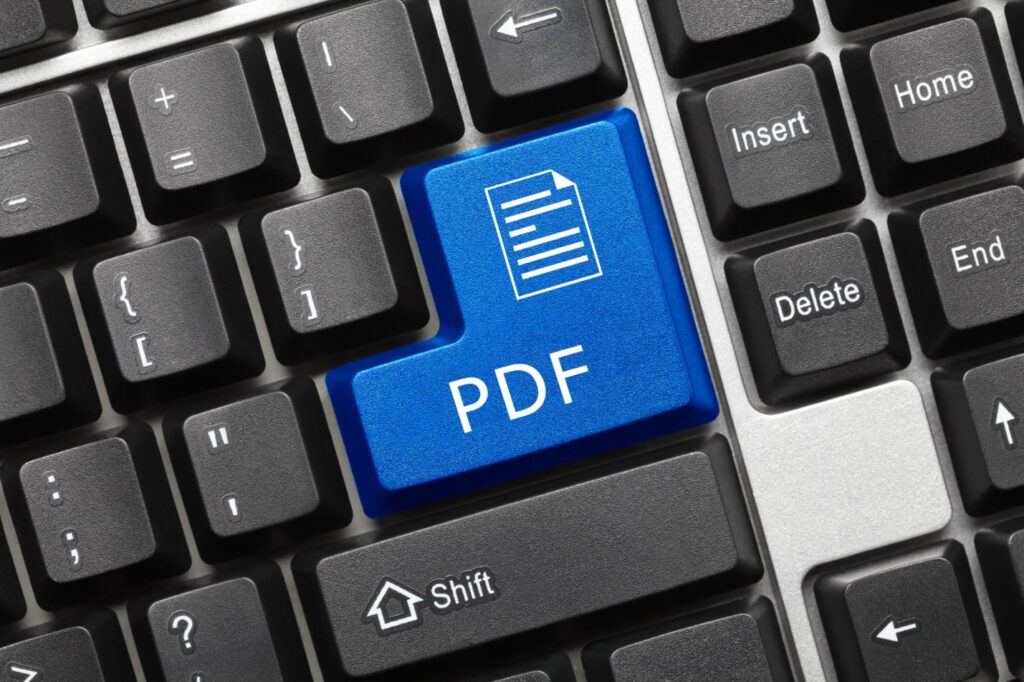If you work with computers you’ve almost certainly encountered PDF files. Here are some great tips for working with the PDF format.
The PDF format has enjoyed a steady growth in popularity since 2008. These documents are viewed across multiple platforms and are a preferred means of data sharing in several parts of the globe.
Given the ever-increasing use of PDFs, it’s no wonder why professionals, students, and even casual computer users are looking to learn more about them. Therein lies the inspiration for this post.
Our goal is to share with you insight that will help you maximize your understanding of and ability to use PDF documents. As your cull through our content, look forward to appreciating all of the great features PDFs offer as well as the file format’s shortcomings. Here you can unlock the PDF Files.
1. Understand The PDF Value Proposition
There are a lot of pros and cons to the PDF format. Before we dive into some of those more granular talking points, it’s important to understand what a PDF file’s main value proposition is.
The PDF file has garnered popularity primarily because of its WIZYWIG (What You See Is What You Get) nature. Put simply, when you look at a PDF, no matter what device you’re looking at it on or what program you’re using to open it, you’re going to see the exact same thing as anybody else that views the document.
Compare that to a Word document that will resize for smaller screens, may feature different typefaces depending on what’s installed on a particular computer, etc.
The downside to having a final/”baked” file format is that they’re not intended to be edited. The upside is that visual consistency is excellent for sharing finalized documents.
2. Appreciate Exceptions to PDF Limitations
The big setback that PDF files have is that, like a photo, they’re static in their presentation and consequently, aren’t made to be edited.
The good news is that new advancements in PDF technology have allowed tools like Adobe Acrobat to deconstruct PDF documents so tweaks can be made to them. This means of editing is best suited for making small adjustments rather than overhauling whole pieces but it’s certainly helpful when you need to fix a typo or finesse formatting. Edit PDFs with a free online PDF Editor
3. Know That Multiple Programs Output to PDF
When people think about PDFs, chances are, they think of the programs Adobe Reader or Acrobat. While it’s true that those programs are particularly suited for managing PDF documents, you don’t need to work exclusively in them to craft PDF files.
Microsoft’s Word, for example, will allow you to export your documents to PDF. Other, free word processors like Google Docs allow you to do the same thing.
4. Acrobat DC VS Reader
If you don’t know the precise differences between Adobe Acrobat and Adobe Reader, you’re not alone. Both programs have their names thrown around interchangeably which creates confusion in the world of PDFs.
Adobe Reader is a free program that’s built to perform basic PDF tasks. That includes reading, printing and making notes on documents, among a few other things.
Adobe Acrobat DC is part of Adobe’s paid suite of tools. With Acrobat DC, you can do just about anything with a PDF including editing, instituting security measures, adding form fields, and much more.
For causal PDF users, the features included in Adobe Reader should be more than enough for your needs. For professionals that need flexibility with their documents or have intellectual property concerns, Acrobat DC is the way to go.
5. The Question of Compression
Since the PDF format self-contains all elements of a particular document, its file size can get cumbersome. We’ve seen plenty of multi-page documents become so bloated that sending them through email ceases to be a possibility due to email attachment constraints.
To help people manage the size of their PDFs, most programs that output to the file format offer compression options. Compression reduces a PDF file’s size by sacrificing some of the document’s fidelity (visual quality). In a perfect world, this compression isn’t noticeable to the casual eye but makes an impact on a file’s size.
You can learn more about PDF compression, how to search a PDF for data you might want to remove, and more on the Adobe website and through third-party tutorial sites.
6. Taking Security Seriously
Any time you commit sensitive information to a digital document, you run the risk of that information being intercepted. Realizing that, the PDF format offers several security protocols you can build into your document.
Robust security options for PDFs are available most notably though Adobe Acrobat DC. In that program, you will be able to password-protect your documents, encrypt them, and permanently attach author information to files to avoid people taking credit for your work.
7. Localization Techniques
Many people don’t know this but Google offers native localization support for PDFs through its tran baked file format, Google will have to use OCR (Optical Character Recognition) to read your PDF and translate it. While this process has gotten better withslate tool. To leverage the feature, head over to the online translate app, upload your PDF and Google will do the rest.
Since PDFs are a time, it’s far from perfect.
Look translated documents over carefully to ensure that mistakes were not made during the conversion process.
The PDF Format Is Among the Most Celebrated in the World
People all over the world love the PDF format for its consistent presentation and versatility. We hope that the insight regarding this file format has given you some context around which features PDFs are most widely celebrated for!
If you’d like additional context on file formats or other popular technology questions, feel free to read some of the additional content we have available on our blog!

